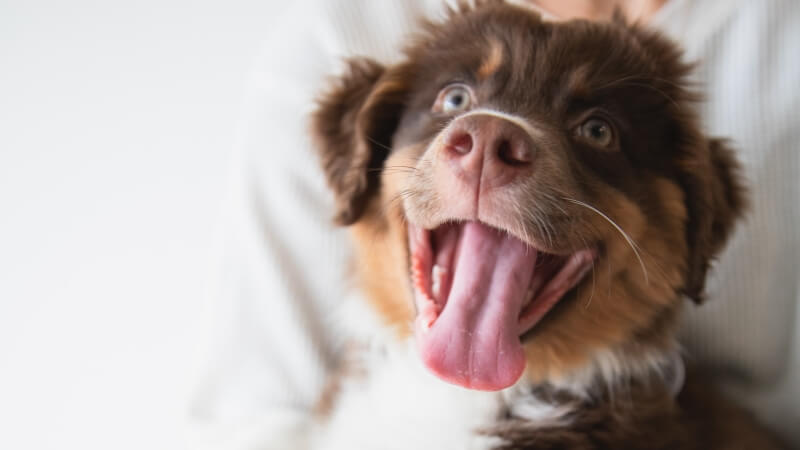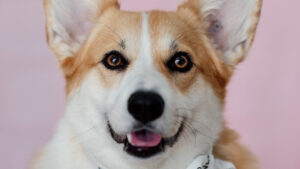
Dog Puzzle Feeder vs Interactive Toys: Which Is Best For Your Pooch?
Choosing the right plaything for your furry friend – be it a dog puzzle feeder or interactive toys – is essential for their mental and

Wondering if a puzzle feeder could revolutionize your pet’s mealtime into an exciting challenge? This unique device promises to engage your furry friend both mentally and physically.
However, it’s up against the snuffle mat, another favorite in the pet enrichment world. Let’s examine these two options to discover which might be the ideal choice for your pet.
The puzzle feeder isn’t just a simple feeding tool; it’s an intellectual challenge for your pet. This section will delve into the intricacies of this fascinating device.
A puzzle feeder is a device that combines feeding with a mental workout. It encourages pets to solve various puzzles to access their food, thereby turning mealtime into a brain game.
Available in multiple forms, such as sliding covers or movable parts, these feeders require pets to think critically to reach their food, providing a much-needed mental exercise, especially for indoor pets.
The world of puzzle feeders is vast and varied. From simple designs, like treat-dispensing balls, to more complex setups requiring multiple steps to solve, there’s a puzzle feeder for every pet’s intelligence level and curiosity.
This diversity allows pet owners to choose a feeder that best matches their pet’s abilities, keeping them engaged without causing frustration.
The primary advantage of a puzzle feeder lies in its ability to keep pets mentally stimulated and engaged, thereby reducing boredom and related behavioral problems.
However, these feeders can be challenging to clean and might not be suitable for all pets, particularly those with low patience or who get frustrated easily.
The snuffle mat offers a different kind of enrichment, focusing on your pet’s sense of smell and natural foraging instincts. This section explores what makes the snuffle mat a unique option for pet owners.
Contrasting with the puzzle feeder, a snuffle mat is a fabric-based mat designed to mimic natural grass, encouraging pets to use their sense of smell to locate hidden treats.
This not only provides an olfactory workout but also mimics natural feeding behaviors in the wild, offering a calming and stress-relieving experience, particularly beneficial for dogs.
Snuffle mats aren’t just plain mats; they are a sensory playground. They vary in fabric textures, lengths, and complexities, with some featuring multiple layers and hidden pockets for an enhanced foraging challenge.
This variety in design allows pet owners to select a mat that aligns with their pet’s foraging skills and interests, ensuring prolonged engagement.
Snuffle mats excel in providing sensory stimulation and are generally easier to create or customize at home.
However, they may lack durability, especially under the use of larger or more enthusiastic pets, and can be challenging to clean, as they tend to trap food residue and saliva.
In this comparison of the puzzle feeder and snuffle mat, we’ll examine their suitability for different pets, stimulation levels, cost-effectiveness, and durability, as well as insights from other pet owners.
Whether a puzzle feeder or a snuffle mat is better for your pet largely depends on their individual personality and natural inclinations.
Puzzle-loving pets might find more joy in a puzzle feeder, while those with a keen sense of smell and natural foraging tendencies might prefer the snuffle mat.
The puzzle feeder is designed for cognitive challenge, engaging a pet’s problem-solving skills to access food.
In contrast, a snuffle mat caters to sensory stimulation, especially the sense of smell, encouraging natural foraging behavior for a calming experience.
A puzzle feeder often represents a more durable, long-term investment but might come with a higher price tag. On the other hand, snuffle mats, though generally cheaper and DIY-friendly, might require more frequent replacements.
Reviews and feedback from other pet owners can provide invaluable insights into how pets interact with these tools, helping you make a more informed decision.
Beyond the basics, there are ways to enhance your pet’s experience with both the puzzle feeder and snuffle mat. This section provides advanced tips and strategies for pet owners.
The use of enrichment tools like puzzle feeders and snuffle mats has far-reaching benefits for your pet’s overall well-being.
This section delves into the cognitive, physical, and emotional advantages of these enrichment options.
Even the best enrichment tools can present challenges. This section offers solutions for addressing issues like pet frustration, maintenance, and hygiene.
Deciding whether a puzzle feeder or a snuffle mat is better for your pet depends on their unique needs and preferences.
Both options offer enriching experiences that contribute to your pet’s mental, physical, and emotional health. By understanding your pet’s individual characteristics and maintaining these tools properly, you can ensure a happy, healthy, and engaged companion.
Whether through the mental challenges of a puzzle feeder or the sensory exploration of a snuffle mat, the ultimate goal is to provide a fulfilling and enriching experience for your beloved pet.
Q1: Can I use both a puzzle feeder and a snuffle mat for my pet?
A1: Absolutely! Using both a puzzle feeder and a snuffle mat can provide a well-rounded enrichment experience for your pet. Alternating between the two can keep your pet engaged and prevent boredom. It’s a great way to cater to both their cognitive and sensory stimulation needs.
Q2: Are puzzle feeders and snuffle mats suitable for all types of pets?
A2: While both are generally designed for dogs, certain types of puzzle feeders and snuffle mats can be used for other pets like cats. However, it’s important to choose a model that is appropriate for your pet’s size, intelligence, and foraging style. Always supervise your pet to ensure they are using the toy safely.
Q3: How often should I use a puzzle feeder or snuffle mat with my pet?
A3: The frequency of use can vary depending on your pet’s interest and the type of enrichment you’re providing. Some pets enjoy daily sessions with their puzzle feeder or snuffle mat, while others may prefer using them a few times a week. Observe your pet’s response and adjust accordingly to keep them interested and engaged.
Q4: Are there any specific treats I should use in a puzzle feeder or snuffle mat?
A4: The choice of treats depends on your pet’s preferences and dietary needs. For puzzle feeders, choose small-sized treats that fit easily into the compartments. For snuffle mats, treats that have a strong scent can make the foraging experience more engaging. Always ensure that the treats are safe and suitable for your pet.
Q5: How do I introduce my pet to a new puzzle feeder or snuffle mat?
A5: Start by allowing your pet to explore the new toy without any pressure. Place treats in easily accessible spots to pique their interest. With puzzle feeders, guide them gently to understand the mechanics. For snuffle mats, scatter some treats on top initially, and then hide them more deeply as your pet gets accustomed to the mat. Be patient and encourage your pet positively throughout the learning process.


Choosing the right plaything for your furry friend – be it a dog puzzle feeder or interactive toys – is essential for their mental and

For passionate pet enthusiasts, a puzzle feeder is more than just a toy; it’s a critical tool for mental stimulation and dietary control for their

Are you ready to dive deeper into the world of puzzle feeder and embark on a journey to ensure your furry friends remain mentally stimulated?

Are you puzzled about how to store your beloved dog puzzle feeder for the long term? These brainy contraptions bring endless joy to your furry

Choosing the right plaything for your furry friend – be it a dog puzzle feeder or interactive toys – is essential for their mental and

Wondering if a puzzle feeder could revolutionize your pet’s mealtime into an exciting challenge? This unique device promises to engage your furry friend both mentally

For passionate pet enthusiasts, a puzzle feeder is more than just a toy; it’s a critical tool for mental stimulation and dietary control for their

Are you ready to dive deeper into the world of puzzle feeder and embark on a journey to ensure your furry friends remain mentally stimulated?
Copyright © 2024 puppypuzzlefeeder. All Rights Reserved.